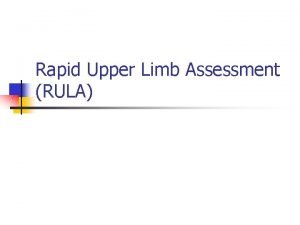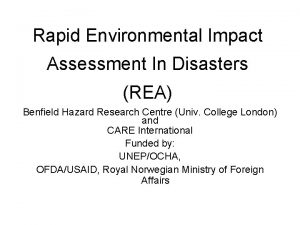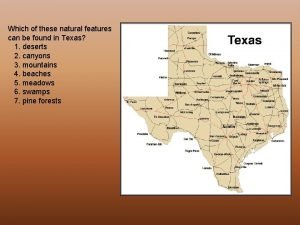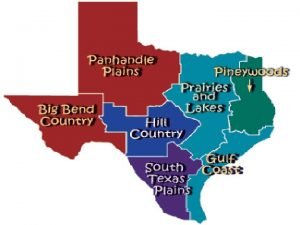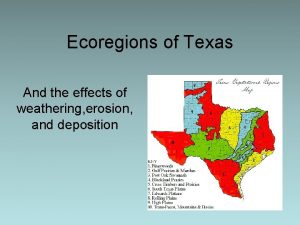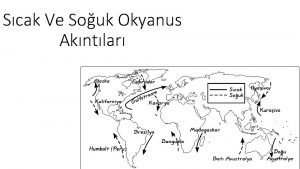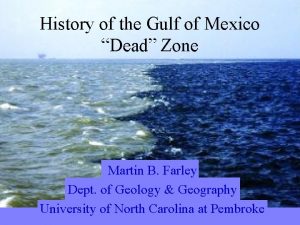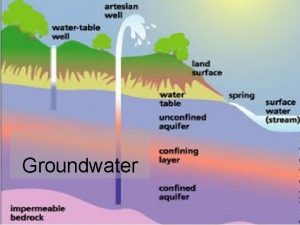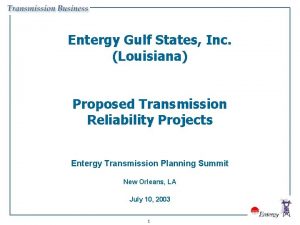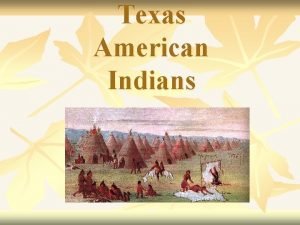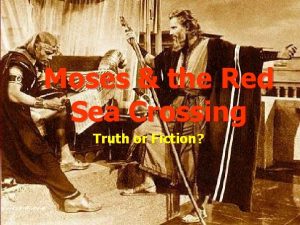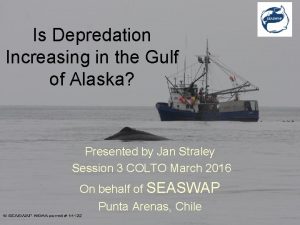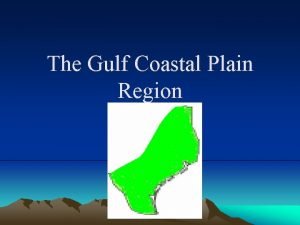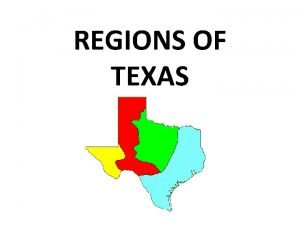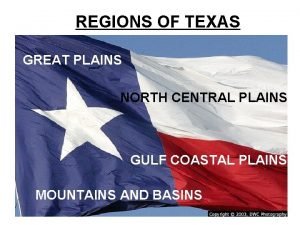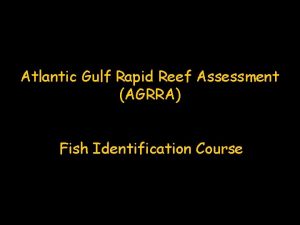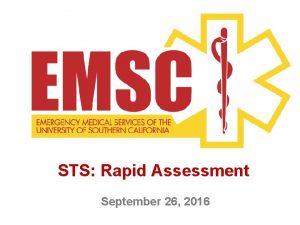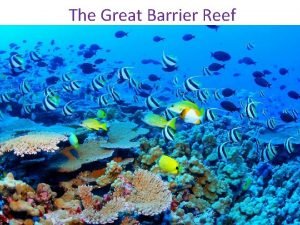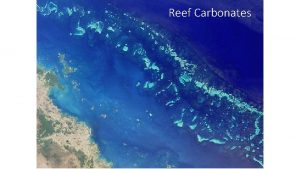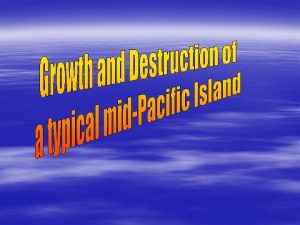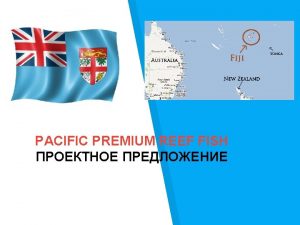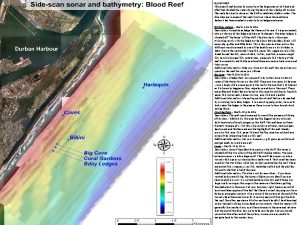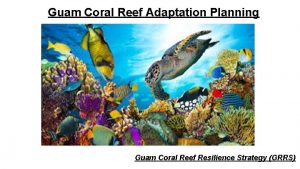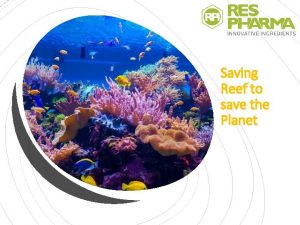K Marks Atlantic and Gulf Rapid Reef Assessment






































- Slides: 38

© K. Marks Atlantic and Gulf Rapid Reef Assessment (AGRRA) Program www. agrra. org Identifying AGRRA Corals: Part 1 By Judith Lang

The following images are Copyright © by New World Publications and by other photographers. Permission is granted to use the photographs in this presentation with the AGRRA Program and, with attribution, for other educational programs. . All other uses are strictly prohibited For images used in Part 1, special thanks to: L. Benvenuti, A. Bruckner, R. Ginsburg, W. Harrigan, P. Humann, B. Kakuk, R. Mc. Call, C. Rogers, C. Sheppard, G. Shinn, R. Steneck, S. Suleimán, T. Turner, E. Weil, M. White

Stony Corals Stony corals have soft polyps above a stony (calcareous) skeleton. Most reef-building corals form colonies of interconnected polyps. contracted polyps The shapes, sizes and color of the polyps and colonies are used to help identify corals. © C. Sheppard expanded polyps

Coral Skeletons The shapes and separated polyps sizes of polyps are also visible round in their underlying skeletons. Septa are conspicuous vertical partitions in the polyp wall. interconnected polyps long ridges and valleys © G. Shinn elliptical & Y-shaped short, reticulated ridges & valleys © G. Shinn

What to Look for Underwater Colony shape – massive (= mound, columnar, heavy plates), crust, plate, branching Colony size range – small to big Colony surface – bumpy, smooth, ridged Polyp size – small to big Polyp shape – round, elliptical, irregular, Y-shaped, meandroid (= short or long ridges & valleys) Polyp color – brown, tan, yellow, olive, green, red Septal shape – fat, thin; smooth, toothed Adapted from P. R. Kramer

Coding Corals in AGRRA Surveys Use the CARICOMP-based coral codes. The code for a genus is the first 4 letters of its genus name. ACRO = Acropora Use the genus code whenever you are unsure of a coral’s species identity. The code for a species is the first letter of the genus name followed by the first 3 letters of its species name. APAL = Acropora palmata

AGRRA Coral Species The stony corals illustrated in this presentation are limited to species that are found in the wider Caribbean at depths (<20 m) that are typical of most AGRRA surveys. For each species: (number in m and ft = maximum colony size)

Diploria strigosa © S. Suleimán Montastraea cavernosa © M. White Porites astreoides © R. Steneck Montastraea faveolata © W. Harrigan Examples of massive corals

Montastraea faveolata MFAV small, round polyps Close-up MFAV diverse colors: greens, browns, grays; polyp centers sometimes brighter than the walls very large mounds with skirt-like edges or plates or crusts © C. Sheppard MFAV (to ~5 m/16 ft) © C. Rogers

Montastraea faveolata MFAV surfaces smooth, ridged, or with bumps aligned in vertical rows © C. Rogers © R. Steneck

Montastraea annularis MANN form plates at colony bases under low light conditions MANN © C. Sheppard small round polyps that are alive at the tops of columns MANN often light brown or yellow-brown large (to ~4 m/13 ft) © R. Steneck

Montastraea annularis MANN How similar to M. faveolata: small polyps can grow quite large MANN (to ~4 m/13 ft) How differs: subdivide to form columns, with basal plates under low light conditions live polyps on column tops lack a skirt-like edge lighter range of colors © A. Bruckner

Montastraea franksi MFRA Close-up some polyps in the irregular bumps that are scattered over the colony surface are large and pale or lack zooxanthellae (can see skeleton below ) form mounds, short columns, crusts, and/or plates under low light conditions MFRA © P. Humann MFRA aggressive spatial competitor can grow quite large (to ~4 m/13 ft) © C. Rogers

M. franksi MFRA massive flattened, plates under conditions of low light bumps have enlarged polyps © T. Turner

Montastraea franksi MFRA How similar to M. faveolata: have bumps on large mounds, crusts or plates How differs: polyps are somewhat larger; polyps on bumps are even bigger, irregularly shaped, and often lack zooxanthellae a more aggressive spatial competitor © R. Steneck

Montastraea franksi MFRA How similar to M. annularis: small polyps on large columnar or platy colonies How different: many irregular bumps with enlarged, irregularly shaped polyps that often lack zooxanthellae more aggressive spatial competitor © C. Sheppard

Which Is which? © C. Rogers © B. Kakuk M. annularis MANN M. franksi MFRA © C. Sheppard M. faveolata MFAV

Complications! Some colonies look like “intermediates” of M. franksi, M. annularis and M. faveolata. If unsure of species identity, code as Montastraea MONT “In general, the genetic and morphological data suggest a north to south* hybridization gradient, with evidence for introgression strongest in the north. However, reproductive data show no such trend, with intrinsic barriers to gene flow comparable or stronger in the north. ” Fukami et al. (2004) Evolution 58: 324 -337. *north to south = Bahamas versus Panama

Solenastrea bournoni SBOU How similar to M. annularis: small round polyps mounds SBOU How differs: lighter colours in life walls of some polyps are more distinct (“outies”) bumpy colony surface much smaller (to ~50 cm/20 in) gets dark spots disease © P. Humann

Solenastrea hyades SHYA How similar to S. bournoni: light colours polyps with distinct walls similar max. size SHYA (to ~60 cm/2 ft) How differs: irregular, lobes above an encrusting base © P. Humann

Which Is which? © C. Sheppard M. franksi MFRA © C. Rogers S. bournoni SBOU

M. cavernosa MCAV large, round, distinct polyps (“outies”) Close-up MCAV mounds, single columns, thick crusts or thick plates pink or orange fluorescence sometimes seen underwater is due to a photosynthetic cyanobacterium (bluegreen alga) in the polyps MCAV © J. Lang © E. Weil (to ~3 m/10 ft)

M. cavernosa MCAV © T. Turner form flattened, massive plates (right) or crusts in low light conditions

Dichocoenia stokesi DSTO protruding, round, elliptical and Y-shaped polyps (“outies”) cream to yellow brown; dark brown in low light conditions small mounds, crusts or plates (usually < 50 cm/20 in) DSTO © R. Steneck © C. Sheppard

Dichocoenia stokesi DSTO How similar to M. cavernosa: distinct polyps mounds, crusts or plates How differs: polyps are more separate, have straighter walls, some are elliptical or Y-shaped more distinct septa smaller © C. Sheppard

Favia fragum FFRA How similar to D. stokesi: distinct, round-elongated polyps, some are Y-shaped FFRA How differs: polyp walls protrude less tiny teeth on septa yellow-brown © P. Humann small (usually < 10 cm/4 in)

Which Is which? © C. Sheppard D. stokesi DSTO © C. Sheppard M. cavernosa MCAV © C. Sheppard F. fragum FRA

Palythoa caribaeorum PAL * sometimes also confused with M. cavernosa © R. Mc. Call How differs: soft-bodied crusts–it’s a zoanthid, not a coral very aggressive spatial competitor PAL overgrowing MCAV © P. Humann How similar to D. stokesi: * distinct polyps, some round and others elliptical cream or light tan color Close-up

Palythoa caribaeorum © L. Benvenuti can be an excellent, early bleaching indicator partially bleached colonies

Siderastrea siderea SSID sunken polyps (“innies”) thin septa uniform colors large mounds (to ~2 m/6 ft) SSID © R. Steneck

Siderastrea siderea SSID some bleached colonies are fluorescent dead bleached © R. Ginsburg

Siderastrea radians SRAD sunken “pinched” polyps (“innies”) SRAD thick septa crusts, low mounds or unattached nodules pale polyp walls, centers dark small (to ~30 cm/1 ft) © P. Humann

Siderastrea radians SRAD How differs from S. siderea: narrower polyps with fewer, thicker septa dark polyp centers smaller, flatter © C. Sheppard

Which is which? S. siderea SSID S. radians SRAD © P. Humann

Stephanocoenia intersepta SINT round polyps with thick septa SINT brown color is most intense in polyp centers appear to “blush” when the polyps contract low mounds or crusts (to ~1 m/3 ft) © P. Humann

Stephanocoenia intersepta SINT How differs from Siderastrea siderea: polyps are not sunken and “blush” when contracting larger septa How differs from S. radians: polyps are round, not sunken, and “blush” when contracting larger mounds or crusts © C. Sheppard

Porites astreoides PAST Yellow, yellow-green or olive (shallow), gray or brown (deep or shade) PAST (usually < 1 m/3 ft) © E. Weil PAST © C. Sheppard Small mounds, thick crusts or plates with bumps

Porites astreoides PAST Close-up Tall, thin polyps look “fuzzy” when expanded © C. Sheppard
 Contoh gulf of evaluation and gulf of execution
Contoh gulf of evaluation and gulf of execution Sentences with exclamation mark
Sentences with exclamation mark Rha adalah
Rha adalah Lexia rapid assessment
Lexia rapid assessment Rapid ethnographic assessment
Rapid ethnographic assessment Sarc-f
Sarc-f Rula score
Rula score Rapid environmental impact assessment in disaster
Rapid environmental impact assessment in disaster Formative assessment marks
Formative assessment marks Gulf coast prairies and marshes climate
Gulf coast prairies and marshes climate Characteristics of the piney woods
Characteristics of the piney woods Gulf of execution and evaluation
Gulf of execution and evaluation South texas brush country weathering and erosion
South texas brush country weathering and erosion Gulf bond and sukuk association
Gulf bond and sukuk association Atakapans
Atakapans Design heuristic
Design heuristic Vocational education uae
Vocational education uae Gulf coast community services association, inc.
Gulf coast community services association, inc. Weathering in the piney woods
Weathering in the piney woods South texas brush country weathering
South texas brush country weathering Kanarya akıntısı
Kanarya akıntısı Gulf of mexico history
Gulf of mexico history Gulf coast odyssey of the mind
Gulf coast odyssey of the mind Mobile crisis outreach team houston
Mobile crisis outreach team houston Gulf coast aquifer
Gulf coast aquifer Entergy ruston la
Entergy ruston la Gulf logo quiz
Gulf logo quiz Western gulf culture
Western gulf culture Gulf culture clothing
Gulf culture clothing Spe code of ethics
Spe code of ethics Palm trees in scotland
Palm trees in scotland Chariot wheel red sea
Chariot wheel red sea Gulf of alska
Gulf of alska Gulf power energy select program
Gulf power energy select program Texas coastal plains plants
Texas coastal plains plants Red sea underwater bridge
Red sea underwater bridge Post oak belt climate
Post oak belt climate Geographical regions of texas
Geographical regions of texas North central plains texas
North central plains texas






